Трябва да сте влезли в
-
moreX
-
Компоненти
-
-
Category
-
Полупроводници
- Диоди
- Тиристори
- Електроизолирани модули
- Изправителни мостове
-
Транзистори
- Транзистори | GeneSiC
- Модули SiC MOSFET | Mitsubishi
- Модули SiC MOSFET | STARPOWER
- ABB SiC MOSFET модули
- IGBT модули | MITSUBISHI
- Транзисторни модули | MITSUBISHI
- MOSFET модули | MITSUBISHI
- Транзисторни модули | ABB
- IGBT модули | POWEREX
- IGBT модули | INFINEON (EUPEC)
- Полупроводникови елементи от силициев карбид
- Go to the subcategory
- Драйвeри
- Силови блокове
- Go to the subcategory
- Електрически преoбразователи
-
Пасивни компоненти (кондензатори, резистори, предпазители, филтри)
- Резистори
-
Предпазители
- Миниатюрни предпазители за електронни системи серия ABC и AGC
- Бързи тръбни предпазители
- Закъснителни вложки с характеристика GL/GG и AM
- Ултрабързи стопяеми вложки
- Бързи предпазители британски и американски стандарт
- Бързи предпазители европейски стандарт
- Тягови предпазители
- Високоволтни предпазителни вложки
- Go to the subcategory
-
Кондензатори
- Кондензатори за двигатели
- Електролитни кондензатори
- Кондензатори тип snubbers
- Кондензатори за мощност
- Кондензатори за DC (постояннотокови вериги)
- Кондензатори за компенсиране на мощност
- Високоволтови кондензатори
- Кондензатори за индукционно нагряване
- Кондензатори за съхранение на импулси и енергия
- DC LINK кондензатори
- Кондензатори за AC/DC вериги
- Go to the subcategory
- Филтри EMI (против смущения)
- Суперкондензатори
-
Защита от пренапрежение
- Защита от пренапрежение за коаксиални приложения
- Защита от пренапрежение за системи за видеонаблюдение
- Защита от пренапрежение за захранващи кабели
- Ограничители за пренапрежение за LED
- Ограничители за пренапрежение за фотоволтаици
- Защита на системата за претегляне
- Защита от пренапрежение за Fieldbus
- Go to the subcategory
- Go to the subcategory
-
Релета и контактори
- Теория- релета и контактори
- Полупроводникови релета АС 3-фазни
- Релета полупроводникови DC
- Регулатори, управляващи системи и аксесоари
- Системи за мек старт и реверсивни контактори
- Електромеханични релета
- Контактори
- Ротационни превключватели
-
Полупроводникови релета АС 1-фазни
- Полупроводникови релета AC еднофазни серия 1 | D2425 | D2450
- Полупроводникови релета AC еднофазни серия CWA I CWD
- Полупроводникови релета AC еднофазни серия CMRA I CMRD
- Полупроводникови релета АС ендофазни серия PS
- Полупроводникови релета AC двойни и четворни серия D24 D, TD24 Q, H12D48 D
- 1-фазни полупроводникови релета серия gn
- Полупроводникови релета АС серия ckr
- Релета AC еднофазни на шина DIN серия ERDA и ERAA
- Еднофазни AC релета за ток 150А
- Двойни полупроводникови релета, интегрирани с радиатор за DIN шина
- Go to the subcategory
- Полупроводникови релета АС 1-фазни, за печатни платки
- Интрфейс релета
- Go to the subcategory
- Индукционни елементи
- Радиатори, Bаристори, Tермични защити
- Вентилатори
- Климатизация, Оборудване за електрически шкафове, Охладители
-
Батерии, зарядни устройства, буферни захранвания и инвертори
- Батерии, зарядни устройства - теоретично описание
- Литиево-йонни батерии. Персонализирани батерии. Система за управление на батерията (BMS)
- Батерии
- Зарядни устройства и аксесоари за батерии
- UPS резервно захранване и буферни захранвания
- Преобразуватели и аксесоари за фотоволтаици
- Енергиен запас
- Горивни клетки
- Литиево-йонни батерии
- Go to the subcategory
-
Автоматика
- Futaba Drone Parts
- Крайни изключватели, Микроизключватели
- Датчици, Преобразователи
- Пирометри
- Броячи, Времеви релета, Панелни измервателни прибори
- Промишленни защитни устройства
- Светлинна и звукова сигнализация
- Термокамера
- Екрани LED
- Управляваща апаратура
-
Регистратори
- Регистратор на температура със запис на лента и цифров показател - AL3000
- Микропроцесорни регистратори с екран LCD серия KR2000
- Регистратор KR5000
- Измервател със функция за регистриране на влажност и температура HN-CH
- Експлоатационни материали за регистратори
- Компактен графичен регистратор 71VR1
- Регистратор KR 3000
- Регистратор РС серия R1M
- Регистратори РС серия R2M
- Регистратор РС - 12 изолирани входа– RZMS
- Регистратор PC, USB, 12 изолирани входа – RZUS
- Go to the subcategory
- Go to the subcategory
-
Проводници, Кабел литцендрат, Кабелни канали, Меки връзки
- Проводници
- Кабел литцендрат
-
Кабели за специални приложения
- Компенсиращи и удължаващи проводници
- Проводници за термодвойки
- Съединителни проводници за РТ датчици
- Многожилни проводници темп. -60C до +1400C
- SILICOUL проводници средно напрежение
- Запалителни проводници
- Нагревателни проводници
- Едножилни проводници темп. -60C до +450C
- Проводници за ЖП приложения
- Нагревателни проводници в Ех изпълнение
- Go to the subcategory
- Кабелни канали
-
Плетени кабели
- Плоски плетени кабели
- Кръгли плетени кабели
- Много гъвкави плетени кабели - плоски
- Много гъвкави плетени кабели - кръгли
- Медни цилиндрични плетени кабели
- Медни цилиндрични плетени кабели и канали/кожуси
- Гъвкави заземяващи ленти
- Плетени проводници от оцинкована и неръждясваща стомана
- Медни изолирани плетени проводници PCV -температура до 85 градуsа по C
- Плоски плетени алуминиеви проводници
- Комплект за подсъединение - плетени проводници и тръбички
- Go to the subcategory
- Оборудване за тяга
- Кабелни накрайници
- Изолирани еластични шини
- Многослойни еластични шини
- Системи за провеждане на кабели (шлауфи)
- Кабелни канали / маркучи
- Go to the subcategory
- View all categories
-
Полупроводници
-
-
- Suppliers
-
Applications
- AC и DC задвижвания (инвертори)
- CNC машинни инструменти
- Energy bank
- HVAC автоматизация
- Двигатели и трансформатори
- Заваръчни машини и заваръчни машини
- Захранващи (UPS) и токоизправителни системи
- Измерване и регулиране на температурата
- Измерване и регулиране на температурата
- Индукционно отопление
- Индустриална автоматизация
- Индустриална автоматизация
- Индустриални защитни устройства
- Компоненти за потенциално експлозивна атмосфера (EX)
- Машини за сушене и обработка на дървесина
- Машини за термоформоване на пластмаси
- Минно дело, металургия и основаване
- Оборудване за разпределителни, контролни и телекомуникационни шкафове
- Печат
- Трамвайна и железопътна тяга
-
Инсталация
-
-
Индуктори
-
-
Индукционни устройства
-
-
https://www.dacpol.eu/pl/naprawy-i-modernizacje
-
-
Обслужване
-
- Contact
- Zobacz wszystkie kategorie
Как да изберем най-здравия куфар?

Choosing a Durable Suitcase is not only about its appearance or capacity – key factors include materials, protective technologies, and construction, all of which significantly impact the suitcase's durability in various conditions. Modern portable suitcases must meet the demands of intensive use, often exposed to adverse weather conditions, impacts, crushing, as well as rapid pressure and temperature changes, such as during air transport. There are many suitcase models on the market that, thanks to advanced technologies, offer exceptional resistance and durability.
Which Suitcases Are the Most Durable?
Key Features Affecting Suitcase Durability
First and foremost, the durability of a suitcase depends on the materials from which it is made. Materials like polycarbonate, aluminum, or ABS offer different levels of protection, but these are not the only essential elements. Advanced locking systems, reinforced corners, special scratch-resistant coatings, and double walls can significantly enhance a suitcase’s resistance to impact and mechanical damage. Depending on the type of material, suitcases exhibit different properties – aluminum models are extremely resistant to crushing and impacts, but are heavier than modern polymers like polycarbonate, which is lightweight, flexible, and equally shock-resistant.
Protective Technologies and Their Importance
Additional protective technologies, such as pressure valves or waterproof seals, impact the durability of suitcases and their adaptability to specific conditions. Water and dust resistance with an IP66 or higher protection class ensures that equipment and items stored in suitcases are safe even in extreme conditions. Moreover, suitcases with moisture resistance certification and adjustable pressure valves allow for the protection of delicate electronic and medical equipment from damage during pressure changes in air transport. TSA locks are another essential security feature – they are indispensable in international travel, allowing security services to open and inspect the suitcase without risking lock damage.
Construction Materials and Their Impact on Usability
Innovations in construction, such as the use of composites or hybrid materials, enable high durability while reducing suitcase weight. As a result, even sturdily built suitcases become more manageable. Reinforcements in the form of steel fittings or polymer corners can effectively extend the suitcase’s lifespan, especially when used in demanding industrial conditions or on construction sites.
Ultimately, the most durable suitcases are those that combine advanced materials, modern protective technologies, and robust construction. Thanks to this, suitcases can withstand even the most demanding journeys and transportation, offering secure and convenient storage for valuable items.
How to Choose a Durable Suitcase?
Selecting a durable suitcase requires considering several key factors, such as the material, construction quality, and additional protective features that can significantly impact the durability and security of the transported items. The choice of a suitable suitcase should depend on both the conditions in which it will be used and the type of items being carried – from delicate electronics and photographic equipment to industrial tools.
1. Suitcase Material and Its Properties
The material from which a suitcase is made is a primary factor affecting its durability. The most popular and durable materials include:
• Polycarbonate – lightweight, flexible, yet very resistant to cracks and impacts. Polycarbonate suitcases are ideal for travel where shock protection and relatively low weight are crucial.
• Aluminum – stands out for exceptional resistance to crushing and mechanical damage, although it is heavier than plastics. Aluminum is primarily chosen by people traveling with delicate equipment who need a suitcase with maximum durability.
• ABS – although slightly less durable than polycarbonate, it offers good protection against damage as a more budget-friendly option. ABS suitcases are also lightweight and suitable for shorter, less demanding trips.
Each material has its specific properties, so the choice should depend on individual needs – polycarbonate is suitable for intensive use, aluminum for top-level protection, and ABS for users looking for a lightweight and affordable option.
2. Construction Quality and Finish
Besides material, construction quality also matters. Good construction means solid closures, reinforced corners, and durable locks. Premium models often have double walls, providing additional protection for contents. It’s worth paying attention to the quality of fittings and finish elements – metal, rust-resistant parts are much more corrosion-resistant and ensure longer suitcase lifespan. Ergonomically designed handles and telescopic handles made of metal or high-quality plastic also contribute to user comfort and durability.
3. Additional Protective Features
Durable suitcases are equipped with a range of additional protective features that significantly enhance the security of transported items:
• TSA Locks – a standard choice for air travel, especially to the United States. TSA locks allow customs officers to open the suitcase without damaging the lock, which is important for protecting transported equipment.
• Seals and Moisture Protection – some suitcases feature special seals that protect against moisture and dust ingress. Waterproof models with high IP ratings perform excellently in challenging outdoor conditions, protecting contents from water and contaminants.
• Pressure Valves – particularly important for air transport, as they allow automatic pressure equalization in the suitcase, preventing damage to delicate items during sudden altitude changes.
• Shock Protection – selected models have additional protections such as special compartments or protective layers that absorb shocks, which is useful when transporting electronic or photographic equipment.
Choosing a durable suitcase should be a well-considered decision based on individual needs and travel specifics. Selected materials, high construction quality, and additional protective features can ensure optimal content security, making the suitcase suitable for various, even extreme, conditions.
What Material for Durable Suitcase Wheels?
Wheels are a key element of any suitcase – they must be durable and resistant to damage to withstand various surfaces and ensure user comfort in all conditions. The choice of wheel material affects both their durability and the ease of transport. The market offers a variety of materials for suitcase wheels, and the choice depends on the intensity of use, type of terrain, and specific features of the suitcase itself.
1. Polyurethane (PU)
Polyurethane is one of the most commonly used materials for suitcase wheels due to its flexibility and high resistance to abrasion. Wheels made of polyurethane are highly durable, resistant to mechanical damage, and effectively absorb shocks, making them ideal for suitcases used on uneven surfaces such as sidewalks, cobblestones, or gravel. Polyurethane is also relatively quiet, which improves user comfort in crowded places like airports or stations.
2. Rubber
Rubber wheels are highly flexible and exceptionally resistant to impacts and wear. Rubber provides a smooth ride and effectively cushions shocks, which is especially useful when transporting heavier luggage. Due to the material's softness, rubber wheels perform well on both smooth surfaces and uneven terrain. Additionally, they are relatively quiet, allowing the suitcase to move almost silently.
3. Hard Plastic (Polypropylene or ABS)
Hard plastic, such as polypropylene or ABS, is often used in more budget-friendly suitcase models. Wheels made from this material are lightweight and moisture-resistant, but offer less abrasion and impact resistance than polyurethane or rubber. Plastic wheels perform well on smooth surfaces, such as mall floors or airports, but may be less effective on uneven terrain, where they are more prone to damage.
4. Rubber
Rubber is a material that provides a smooth ride, good grip, and durability, although its properties can vary depending on the type and quality of the blend. Rubber wheels work well on both flat and uneven surfaces, though they may wear more quickly compared to polyurethane. Rubber wheels also offer quiet operation and good user comfort.
5. Multi-directional and Dual Wheels
Regardless of material, some models of durable suitcases offer additional features such as multi-directional or dual wheels. Multi-directional wheels allow the suitcase to rotate freely around its axis, increasing maneuverability in tight spaces. Dual wheels, often made of polyurethane, enhance stability and evenly distribute weight, reducing the risk of damage and providing longer durability.
Nanuk Suitcases: An Example of High-Quality Wheels
Nanuk suitcases, known for their durability, use polyurethane wheels that are exceptionally resistant to damage and designed for tough conditions. With durable wheels and a stable construction, Nanuk suitcases are excellent for industrial and field applications, ensuring comfortable transport of heavy equipment even on uneven surfaces. Additionally, the use of quiet, shock-absorbing wheels makes Nanuk suitcases a great choice for professionals seeking durable solutions.
Which Suitcases Have 100% Stainless Steel Components?
Suitcases with metal components made from stainless steel offer higher durability and better corrosion protection, making them an ideal choice for intensive use in demanding conditions. Stainless steel is resistant to rust, moisture, and varying weather conditions, which is why it is used in suitcases that need to withstand high loads and protect equipment in challenging transport situations. In this type of model, stainless steel is used in elements such as handles, locks, hinges, and parts that reinforce the suitcase structure.
1. Durability and Corrosion Protection
Stainless steel is a material of exceptional durability, meaning that suitcase components made from it are resistant to mechanical damage and deformation. The use of stainless steel in key structural parts minimizes the risk of damage from heavy loads or exposure to aggressive external factors like moisture or salty air. This makes stainless steel-reinforced suitcases particularly suitable for trips to humid or coastal areas, where the increased risk of corrosion could quickly damage standard metal components.
2. Convenience and Security
Stainless steel gives suitcase construction rigidity, increasing its stability during handling and preventing unexpected openings. Handles made from this material provide comfort even under heavy loads, while stainless steel locks and hinges protect suitcase contents from tampering and offer a high level of security during transport.
3. Overview of Models with Stainless Steel Components
Suitcase models with 100% stainless steel components are available from brands that focus on professional transport and protective solutions, such as industrial and protective cases designed for transporting electronic equipment, photographic gear, or tools.
Which Suitcases Can Be Secured with a Padlock?
Suitcases with the option of locking with a padlock provide an extra level of security, which is especially useful for international travel, transporting valuable items, or situations where access to the suitcase contents should be restricted. Padlocks can either be integrated into the lock mechanism or serve as separate security – both solutions have their advantages depending on the user's needs.
1. Types of Locks Adapted for Padlocks
Suitcases designed for padlocking often come with special handles or loops that allow easy attachment of a padlock. Popular solutions include suitcases with zipper locks that have eyelets for a padlock or models with additional reinforced latches that also have space for attaching a lock. These options give users flexibility in choosing the type of security and enhance the overall protection of the suitcase.
2. TSA Locks – Additional Security and Compliance
TSA (Transportation Security Administration) locks are a popular solution that allows suitcases to be locked with a padlock while ensuring compliance with security regulations, particularly at airports. These locks allow customs officials to open the suitcase without damaging the lock using a special TSA master key. This is a useful option for travelers going to countries where thorough security checks are conducted.
3. Additional Locking Features
Beyond traditional padlocks, there are also suitcases with combination locks and latch locks available on the market. These models offer the convenience of quick access without needing to remove the padlock each time, but with the option to add one if extra security is required. This is an important feature in protective suitcases used for industrial or professional purposes, such as transporting delicate electronic equipment or photography gear.
Impact-Resistant Suitcases
Impact-resistant suitcases are designed to meet the needs of users transporting equipment or items that require exceptional protection. They feature special materials and technologies that absorb shocks, preventing damage to the contents from strong impacts, falls, or shocks during transport.
1. Durable Materials – ABS, Polycarbonate, and Aluminum
The material is a key factor affecting the impact resistance of a suitcase. Impact-resistant suitcases are made from materials such as ABS (acrylonitrile-butadiene-styrene), polycarbonate, and aluminum. ABS is known for its high resistance to cracks and flexibility, which allows it to absorb impacts without damaging the suitcase structure. Polycarbonate offers exceptional scratch resistance and flexibility, effectively absorbing shocks. Aluminum, though slightly heavier, is highly resistant to crushing and provides additional protection against impacts.
2. Reinforced Construction
In addition to the material, the design of the suitcase itself plays a significant role in impact protection. Durable suitcase models often feature reinforced corners, which serve as the first line of defense against mechanical damage. Many of these suitcases also have additional reinforcing ribs on the surface, which increase their impact resistance and reduce the risk of cracking. For even better protection, extra layers of padding with shock-absorbing materials are often used inside.
3. Shock-Absorption Technology
Durable protective suitcases utilize shock-absorption technologies to provide extra security for transported equipment. Modern solutions, such as specially shaped foam inserts that can be adjusted to the shape of the contents, ensure impact energy absorption, protecting items from sudden shocks.
4. Ideal for Extreme Conditions
Thanks to the combination of durable materials, reinforced construction, and shock-absorption technology, impact-resistant suitcases are an ideal solution for air transport, long trips, and industrial applications. They are indispensable for professionals transporting electronic, photographic, or laboratory equipment, where any shock can lead to costly damage.
Impact resistance is one of the key features that make durable suitcases widely applicable across various industries, offering reliability and security when transporting valuable items.
Crush Resistance of Suitcases
Crush resistance is a critical feature of suitcases designed to transport delicate, valuable items in situations where there is a high risk of heavy pressure. Suitcases with enhanced crush resistance are designed to withstand immense pressures, making them suitable for air travel, marine transport, and storage in tight spaces like car trunks or lockers.
1. High-Strength Materials
Crush-resistant suitcases are commonly made from exceptionally tough materials such as polycarbonate, ABS, or aluminum. Polycarbonate is highly flexible, allowing it to withstand pressure without deformation. ABS, on the other hand, is valued for its resilience and elasticity, enabling it to return to its original shape after pressure. Aluminum provides the highest level of crush resistance, forming a solid, non-deformable barrier.
2. Structural Reinforcements
Crush-resistant suitcases often incorporate special ribs and reinforced corners to enhance pressure resistance. These structural reinforcements allow for even distribution of pressure, minimizing the risk of damage to both the suitcase structure and its contents. This ensures that even when transported in a stacked arrangement or under extreme conditions, the contents of the suitcase remain safe.
3. Multi-Layered Systems
Advanced crush-resistant suitcase models use multi-layered systems, where several layers of material provide added protection. For example, a hard polycarbonate outer layer can be combined with an inner cushioning layer, further enhancing crush resistance. Multi-layered construction offers both lightness and exceptional durability.
4. Cushioning Inserts and Organizers
Some suitcases use special inserts or organizers that support crush resistance by preventing items from shifting inside. Foam inserts, dividers, and special compartments absorb part of the pressure force, increasing protection for the contents. This is especially important for electronic equipment or delicate devices.
5. Adaptation to Challenging Transportation Conditions
Crush-resistant suitcases are an excellent choice for those transporting valuable equipment in difficult conditions. They perform exceptionally well in fieldwork, air travel, and situations where suitcases are exposed to contact with other heavy luggage or equipment. Thanks to the combination of hard materials, structural reinforcements, and modern cushioning solutions, these suitcases can provide maximum protection for their contents, even in the most demanding transportation scenarios.
With such technologies, high crush-resistant suitcases become a reliable choice for professionals and travelers carrying valuable and delicate items, ensuring durability and confidence in protection at the highest level.
Suitcase Resistance to Extreme Weather Conditions
Suitcases designed for use in extreme weather conditions must meet a variety of environmental challenges. Whether dealing with exceptionally low or high temperatures, humid environments, or intense UV radiation, their construction and materials are aimed at ensuring the safety of transported items, protecting them from damage related to harsh weather conditions.
1. Resistance to Extreme Temperatures
Suitcases resistant to low and high temperatures are made from materials that not only maintain structural integrity but also minimize the impact of temperature changes on their contents. For example, polycarbonate has a high resistance to temperature fluctuations, making it suitable for transporting equipment in extreme cold as well as heat. Additional internal insulating layers can enhance protection against sudden temperature spikes, which is particularly important for electronics and valuable items.
2. Protection Against Moisture and Water
Waterproof suitcases are equipped with special seals and protections that ensure complete impermeability, guarding the contents against water, moisture, and corrosion. Models with a high waterproof rating (e.g., IP67) can withstand not only rain or snow but also brief immersion in water. This makes them suitable for use in high-humidity areas, such as the tropics, and in situations where there is a high risk of flooding.
3. UV Radiation Resistance
Suitcases intended for use in full sunlight or intensely sunny environments must be UV resistant. Exposure to sunlight can lead to material degradation and even deformation, which is why suitcases made from UV-resistant materials, such as polypropylene or certain polycarbonate blends, are particularly valued by users needing luggage for long-term expeditions.
4. Protection Against Atmospheric Factors
Suitcases for extreme conditions are often equipped with additional protective coatings that enhance their resistance to sand, dust, and other contaminants. Dustproof models are ideal for transport in dusty environments, such as deserts or construction sites. Thanks to airtight seals and advanced locking systems, dust and fine contaminants do not penetrate the suitcase, protecting delicate items from damage.
5. Durability in Extreme Conditions
Suitcases designed for extreme weather conditions combine durable materials with modern security technologies. Users can choose models with additional reinforcements and protective coatings, allowing them to safely transport delicate items in environments where both extreme temperatures and challenging terrain can pose a threat.
With these features, suitcases resistant to extreme weather conditions are an indispensable solution for professionals working in the field, travelers, and individuals who require the highest level of protection for their equipment in any weather conditions.
Functionality and Internal Organization
Suitcases with well-planned internal organization are a crucial element in protecting delicate items and increasing the comfort of transport. Depending on their purpose, modern models offer various storage options, from dividers and pockets to professional organizers.
1. Protective Dividers
Dividers are the foundation of safe organization inside the suitcase, allowing for the separation and securing of different items. Made from shock-absorbing materials, such as foam or EVA, they absorb shocks and prevent the contents from shifting. This ensures that delicate electronic equipment, glass, and even valuable trinkets can be safely transported without the risk of damage.
2. Pockets for Small Accessories
Suitcases with internal pockets allow for convenient storage of smaller items, such as cables, chargers, or documents. The pockets are usually made from durable, flexible materials that keep accessories in one place and minimize the risk of losing them during transport. They are often equipped with zippers, which further enhances security.
3. Built-in Organizers
Organizers, such as dividers or mesh pouches, are an excellent solution for those transporting a larger number of small, delicate items, such as cameras, lenses, tools, or medical equipment. Organizers allow for quick access to individual accessories while simultaneously protecting them from mechanical damage.
4. Mounting Systems
Some models of durable suitcases are equipped with flexible straps that stabilize the contents, which is particularly useful during travel. These straps prevent heavier items from shifting, thus preventing damage and ensuring stability even with frequent changes in the suitcase's position.
5. Customizing the Interior to Individual Needs
Advanced models of durable suitcases offer the possibility of personalizing the interior. Users can customize the arrangement of dividers and organizers according to the dimensions of their equipment and transportation needs. This flexibility in interior organization allows the suitcase to be used for various applications, from tourist travel to professional transport of delicate devices.
Functionality and internal organization are indispensable elements of durable suitcases, allowing for safe storage and easy access to transported equipment. As a result, these suitcases are an invaluable solution for users who value order, convenience, and the highest level of protection during transport.
Diverse Applications of Durable Suitcases
Durable suitcases are a versatile solution tailored to many industries and applications that require special protection for equipment and security during transport. With a varied range of models dedicated to specific user needs, one can choose suitcases suitable for travel, photography, industry, medicine, and other specialized fields.
1. Travel Suitcases
For travelers, a durable suitcase guarantees that their belongings will remain safe regardless of transportation conditions. These suitcases offer crush resistance, shock protection, and moisture resistance, safeguarding their contents even when the suitcase is placed in an airplane's cargo hold. Travel models are often equipped with lightweight yet durable wheels and ergonomic handles, making them easy to carry and maneuver.
2. Suitcases for Photographers
Photographers and videographers use durable suitcases to protect delicate and often expensive equipment. These suitcases typically come equipped with foam inserts that cushion shocks, as well as special dividers and organizers that allow for the safe storage of cameras, lenses, memory cards, and cables. This ensures that professional equipment is always within reach while also being protected from damage.
3. Suitcases for Industry
In industrial sectors such as construction or manufacturing, durable suitcases serve to store and transport tools, machine parts, and sensitive measuring devices. They require suitcases that can withstand harsh working conditions – dust, moisture, and rapid temperature changes. Sturdy construction, dustproofing, and moisture resistance ensure that tools and devices remain safe and functional, even in demanding environments.
4. Medical Suitcases
The medical field requires special protection for delicate devices and materials that must be sterile and fully secured during transport. Durable medical suitcases offer thermal insulation, waterproofing, and the ability to regulate internal pressure, which is crucial for transporting medications, surgical tools, and delicate diagnostic devices. Some models are specially designed to meet stringent hygiene standards.
5. Suitcases for Specialized Applications
There are many other fields where durable suitcases are essential equipment. They serve to protect military equipment, electronic devices, and secure gear used in the exploration of extreme terrains, such as the Arctic or deserts. These suitcases often combine waterproofing, dustproofing, and resistance to extreme temperatures, ensuring the protection of equipment that must function reliably under all conditions.
With a wide range of applications, durable suitcases are an indispensable solution for individuals and industries that demand not only functionality but also the highest level of protection.
Durable Nanuk Suitcases – Maximum Equipment Protection in Any Conditions
Nanuk suitcases are highly regarded among professionals who require maximum protection for their equipment, regardless of transportation conditions. These incredibly durable suitcases, designed for extreme environments, combine advanced technology with robust construction. They effectively protect users' gear from shocks, moisture, dust, and temperature fluctuations, making Nanuk suitcases an ideal choice for photographers, industrial specialists, travelers, and military personnel.
Best Materials and Technologies
Versatile Nanuk suitcases are made from exceptionally durable NK-7 polypropylene, which provides maximum impact and crush resistance. Thanks to this technology, the suitcases can withstand falls from significant heights or transport in unfavorable conditions without compromising their contents. Unlike other materials, NK-7 is crack-resistant, which is crucial in demanding fields such as industry and photography.
Waterproofing and Dustproofing
Suitcases from Nanuk are fully waterproof and dustproof, ensuring that the equipment remains protected from environmental factors such as rain, snow, or dust. These products meet the IP67 waterproofing standards, meaning they are completely resistant to immersion in water up to 1 meter for 30 minutes. Such features are ideal for users transporting equipment in humid or dusty environments, such as construction sites, expedition areas, or coastal settings.
Safety Systems and TSA Locks
Nanuk suitcases are equipped with innovative PowerClaw locks, which provide exceptional durability and ease of use. This ensures that the locks will not accidentally open, guaranteeing the safety of the contents even during intense transport. Additionally, many models of Nanuk suitcases feature TSA locks, allowing customs officers to safely open the suitcase without damaging it, which is crucial for air travel.
User Comfort and Ergonomics
Designed with user comfort in mind, these durable suitcases come with ergonomic handles and durable, abrasion-resistant wheels that allow for easy and smooth transport. The wheels, made from flexible polyurethane, enable movement over uneven surfaces, which is particularly helpful in fieldwork. For added convenience, many models also have adjustable telescopic handles that can be customized to the user's height.
Versatile Applications of Nanuk Suitcases
Nanuk offers a wide range of suitcases, from compact models ideal for storing smaller equipment to large cases designed for transporting specialized devices. Each model can be customized to individual needs by equipping it with organizers, dividers, or foam inserts that ensure the safe storage of delicate items. Consequently, Nanuk suitcases perform excellently in the photography, medical, and industrial sectors.
Nanuk suitcases are synonymous with reliability and the highest level of protection. The excellent craftsmanship, durability, and functionality make them an ideal choice for users seeking maximum equipment protection, regardless of the conditions.
Summary
This article discussed several important aspects influencing the durability and functionality of suitcases. The first step in finding the most durable suitcase is understanding the features and technologies that contribute to its longevity. We highlighted key factors such as material, construction quality, and additional protective features that should be considered when making a selection. We also analyzed various materials used in the production of wheels, emphasizing their resistance to damage and suitability for different surfaces.
By being aware of airline transport regulations, users can choose suitcases that comply with safety requirements. An important element is also the use of stainless steel metal components that increase the durability of the suitcases and protect them from corrosion.
Locks and security options, such as the ability to lock with a padlock, further enhance the security of the suitcase's contents. In the context of resistance to various threats, we discussed the characteristics of suitcases resistant to shocks and crushing, as well as those designed to withstand extreme weather conditions.
Functionality and internal organization of suitcases are also crucial, allowing for the safe storage of delicate items through the use of dividers and organizers. Finally, we presented the diverse applications of durable suitcases, which are dedicated to travel, photography, industry, and medicine.
Nanuk suitcases, as an example of top quality, combine modern materials, advanced technologies, and exceptional functionality, providing users with reliable equipment protection in any conditions. With careful selection of features and functions, they represent an excellent choice for anyone seeking the highest quality security for their belongings.
Related products
Related posts
 Thermally conductive materials in power storages
Thermally conductive materials in power storages
 Measuring power and energy in electric circuits
Measuring power and energy in electric circuits
 Industrial communication in explosion hazardous areas (with MTL components)
Industrial communication in explosion hazardous areas (with MTL components)








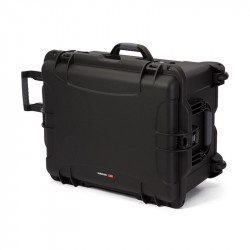











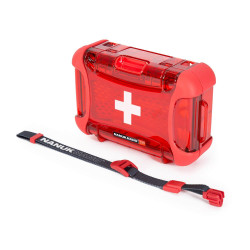








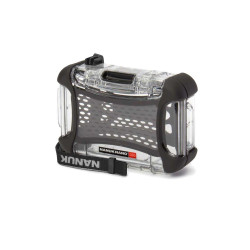










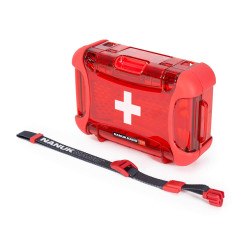



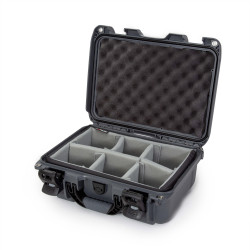




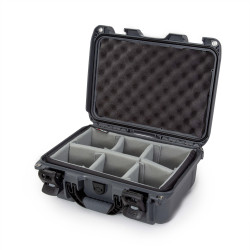










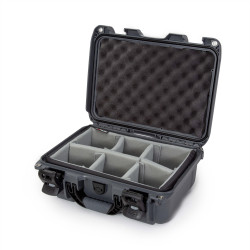

















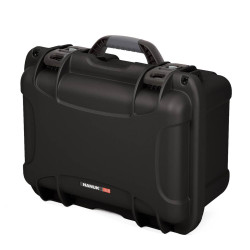

























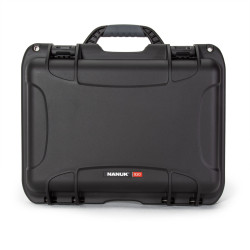






















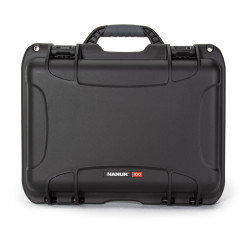



































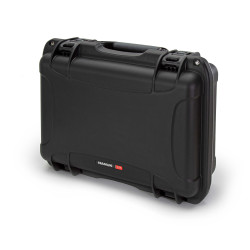



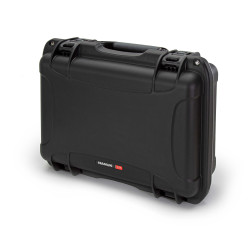









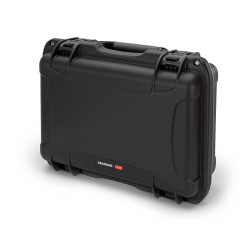





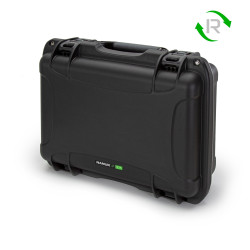




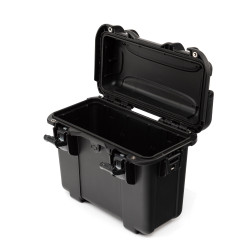





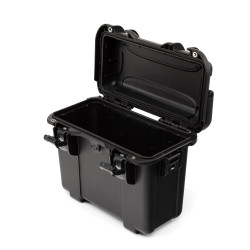














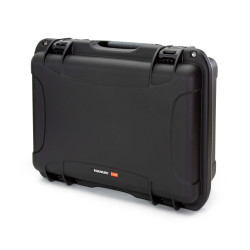














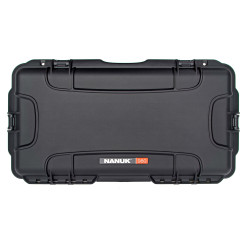




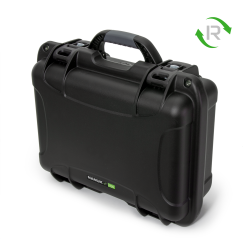









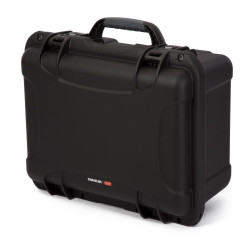









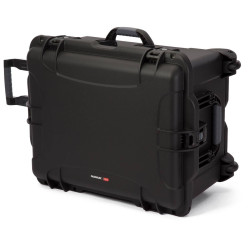

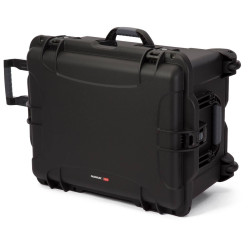





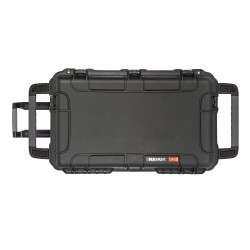














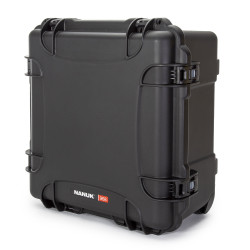










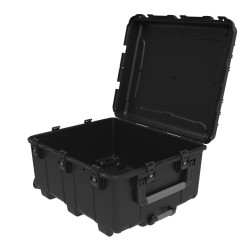


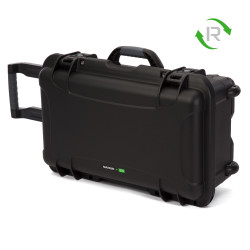




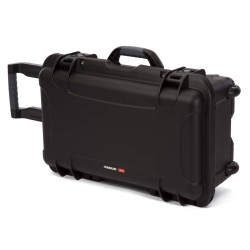


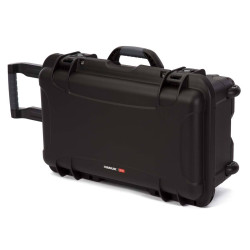












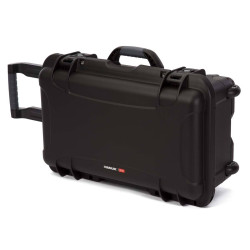
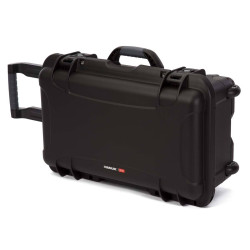

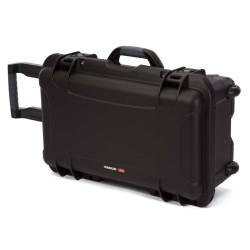

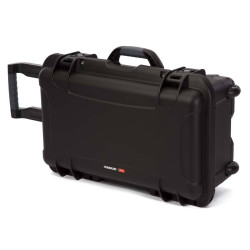









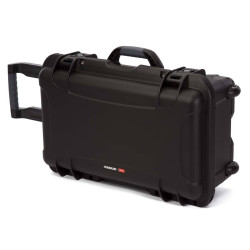









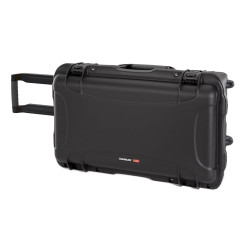




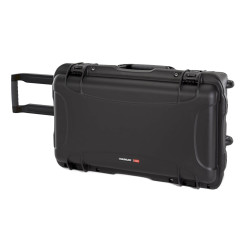


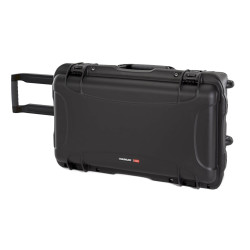







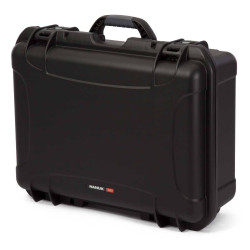











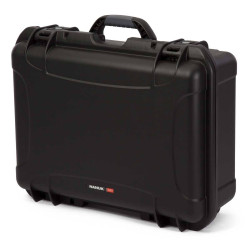










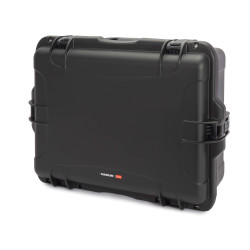
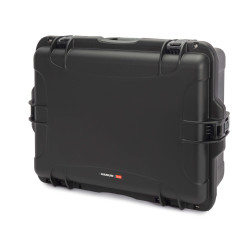
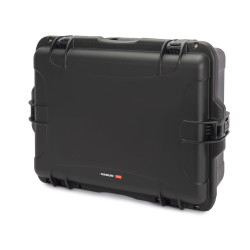







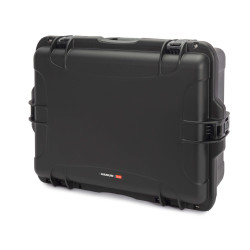
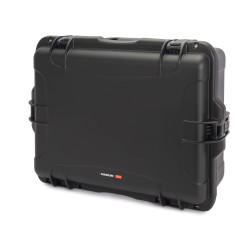








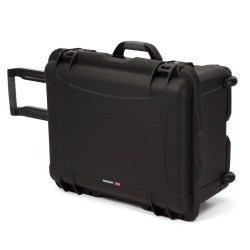










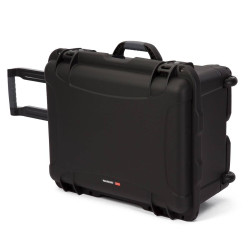







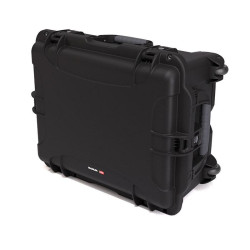















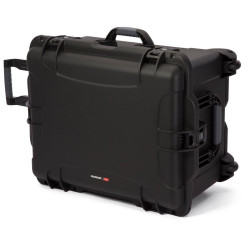







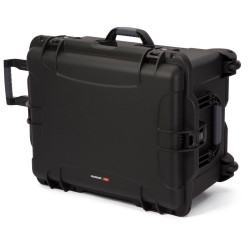








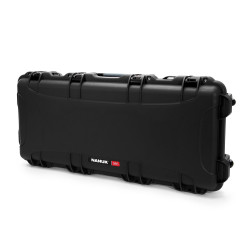

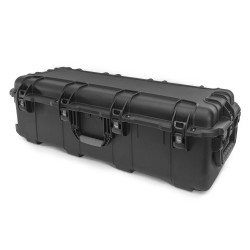









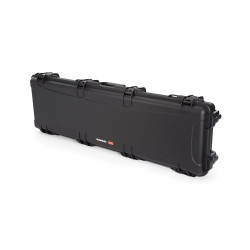














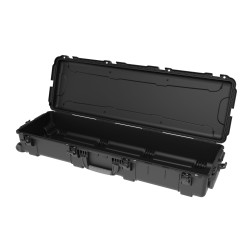






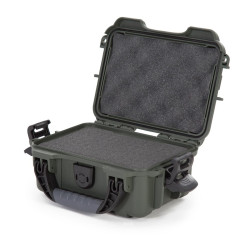























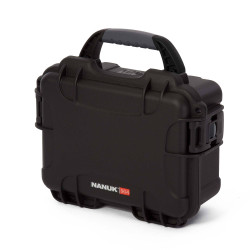






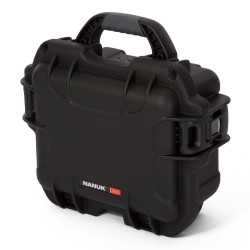



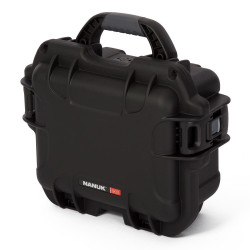
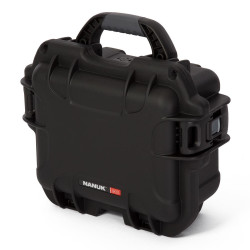























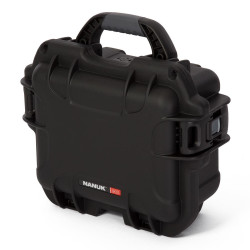
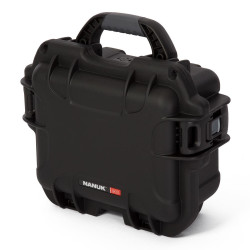


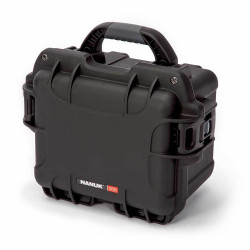


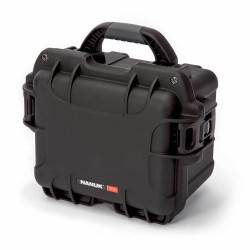






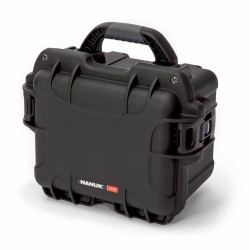

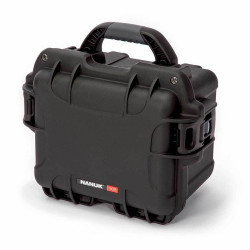












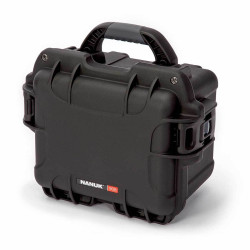






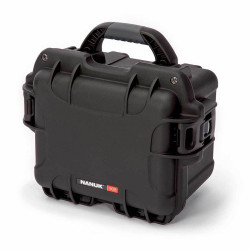


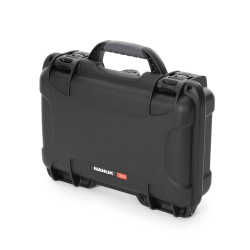
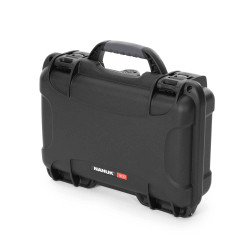


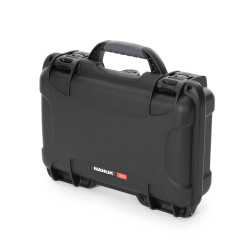


















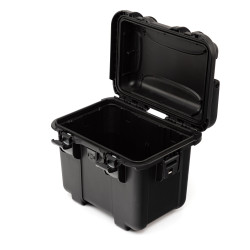


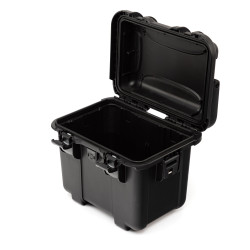


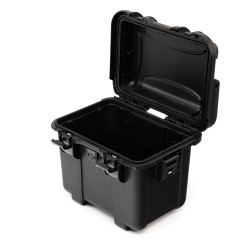





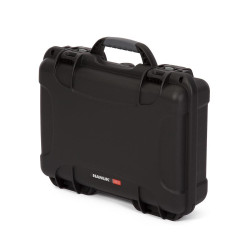







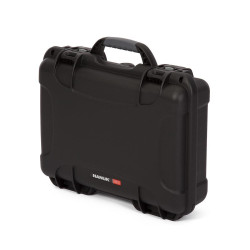










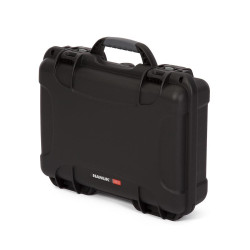
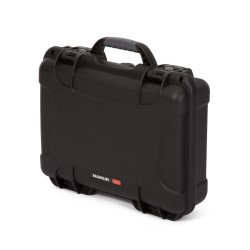
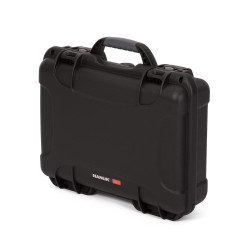



Leave a comment